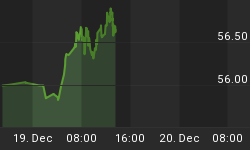Although I believe gold still faces a very rosy future, an agreement in Washington that avoids default and growing concerns of a global economic slowdown could create significant near-term headwinds for gold investors.
While the dysfunction of the US government is on stark display over the debt ceiling negotiations, other areas of the world show similar policy confusion. In the European Union, great doubts exist as to how the leaders will be able to stem the tide of serious sovereign debt contagion without inviting recession and an uptick in inflation. In China, commentators seem to lack confidence that the economy can maintain its impressive growth rate if its major trading bloc partners fall back into recession. This uncertainty has created a level of financial fear that has contributed to gold's run up to more than $1,600 per ounce. However, this also means that any weakening of these fears could lead to a pull back in gold. An agreement in Washington, however meaningless, may be such a trigger.
Evidence has grown that the United States government has no real intention of curbing its spendthrift ways. By next Tuesday, Congress will likely reach some sort of pallid agreement that will involve a short-term agreement to raise the debt ceiling just enough to postpone an imminent fiscal crisis until after the 2012 election. This will, of course, be another case of kicking the can down the road - and will only further compound the very problems that have helped send gold soaring. Still, any agreement that prevents an immediate default on Treasury debt will be greeted with great relief in the markets. The good feelings may spark a short-lived rally in stocks and sell-off in gold.
Another near-term hurdle for gold will be the dawning realization that recession may take hold once again in many regions around the globe, most notably in the US and eurozone. To the extent that these recessions are deflationary, they could drag on the gold price.
Despite the agitation of the freshman Tea Party members of the US House of Representatives, there appears little or no serious discussion about curbing the rise of runaway government spending that is acting as a crippling parasite on the US economy. Similarly, the punitive nature of the present so-called sovereign debt rescue packages in the eurozone likely will fan the flames of recession in Europe. To the extent that these downturns are not met with new money-printing, they could hypothetically hurt the gold price.
This is especially true if the implosions among Western economies impede the growth of China. For now, it appears China's breakneck growth is indeed slowing, but it is neither clear what role their export markets play in this nor how quickly they will be able to shift to a domestic-consumption model.
In normal times, these deflationary forces could present long-term problems for the gold price; however, these are not normal times. Rather, we believe the stage is being set for the currency catastrophe we have long forecast. In our calculation, the sovereign debt problem likely will increase. Eventually, even suddenly perhaps, it will lead to a currency crisis. This may cause a temporary capital shift from the euro into the US dollar, temporarily correcting the current dollar slide. But very quickly, I expect investors would realize that the US dollar itself is most vulnerable. As it is the international reserve currency, this might very well threaten a currency collapse and a surge in the price of gold.
In summary, gold appears set on a very strong upward path. However, in the short term, if global recessionary forces re-emerge and/or investors become euphoric over the US dodging a debt default, gold could face a significant price correction. If governments inflate wildly in a futile attempt to avert a pending depression, leading to stagflation, as we expect, then gold should rebound in price.
This should not be construed as an appeal for investors to sell their gold and try to time their way back into the market. Rather, I would suggest that there may be some discounted opportunities in the coming months. Hold on tight for turbulence ahead, and keep your bearings fixed on your intended destination.
Subscribe to Euro Pacific's Weekly Digest: Receive all commentaries by Peter Schiff, Michael Pento, and John Browne delivered to your inbox every Monday.
Click here for free access to Euro Pacific's new special report: What's Ahead for Canadian Energy Trusts?
Be sure to pick up a copy of Peter Schiff's hit economic fable, How an Economy Grows and Why It Crashes.















